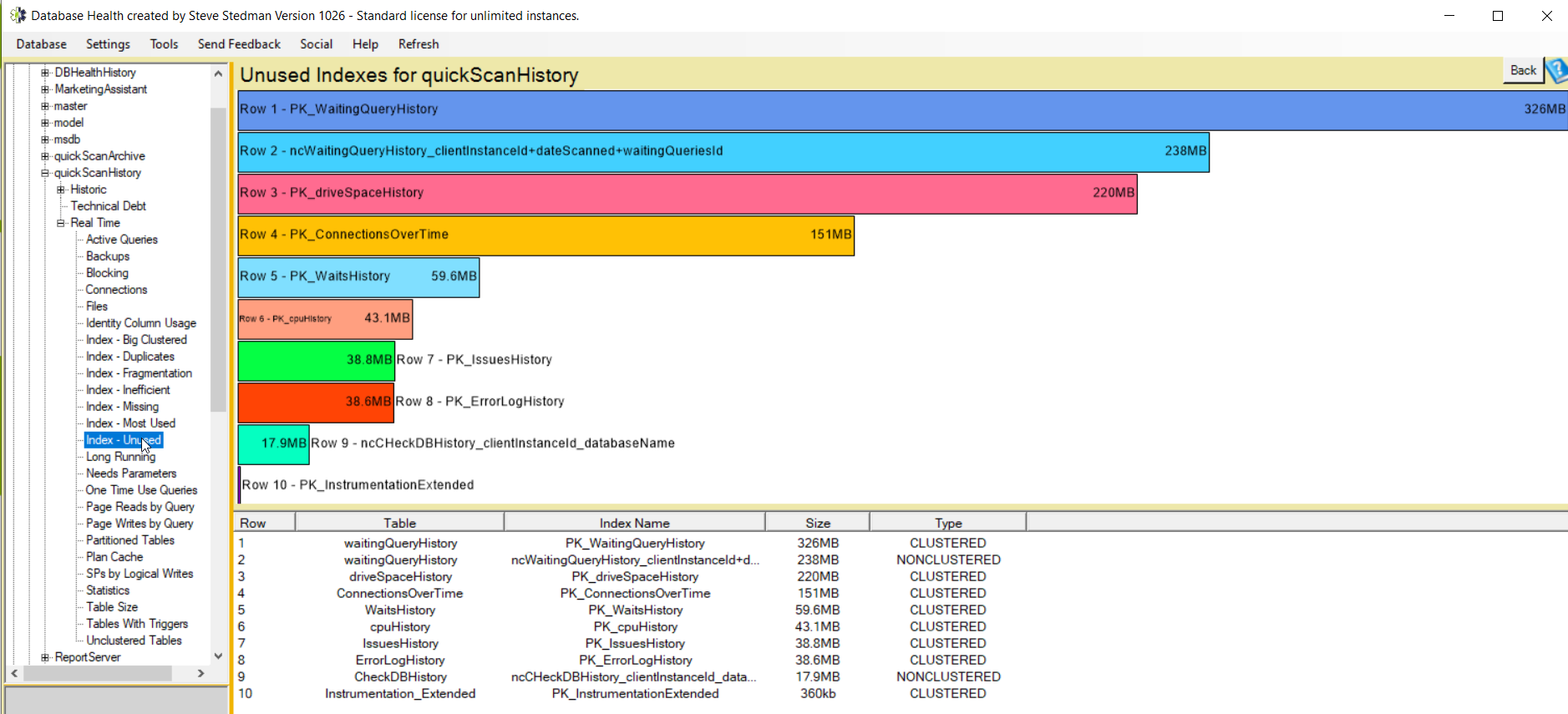Dangers of Removing Indexes

In the world of database management, maintaining optimal performance is an ongoing challenge. One crucial aspect that often gets overlooked is the management of indexes. While indexes can significantly enhance query performance, having too many of them can lead to issues when it comes to inserts, updates, and deletes. In this blog post, we’ll explore the delicate balance of index management and discuss strategies to identify and remove unnecessary indexes without compromising system stability.
The Dilemma of Too Many Indexes
When a database table becomes cluttered with an excessive number of indexes, it can cause several performance problems. One of the key issues is that some of these indexes may be redundant or not used at all. Removing such indexes is a smart move, but how can you determine which ones are expendable?
Reports to the Rescue
Fortunately, there are tools and reports at your disposal to help you assess your indexes’ utility. In particular, Database Health Monitor offers valuable reports that shed light on your index performance. Let’s take a closer look at some of these reports:
- Unused Index Report: This report highlights indexes that haven’t been used, indicating their potential redundancy.
- Most Used Index Report: On the flip side, this report identifies the indexes that are heavily utilized, offering insights into critical areas of optimization.
- Duplicate Indexes Report: This report pinpoints indexes are duplicates, or partial duplicates with other indexes.
- Inefficient Indexes Report: This report pinpoints indexes that might be causing performance bottlenecks, providing guidance on where improvements are needed.

Additionally, you can leverage the Dynamic Management View (DMV) called sys.dm_db_index_usage_stats to gain insights into how your indexes are being utilized. However, it’s important to note that these reports and the DMV reflect the current state of your system. To make informed decisions, it’s advisable to monitor index usage over a span of several weeks.
Identifying Candidates for Removal
When considering which indexes to remove, focus on those that exhibit high update activity but low seek, scan, and lookup operations. Such indexes often indicate excessive work being done on them with limited usage.
The Slow and Steady Approach
If you decide to remove indexes, proceed with caution. Avoid the temptation to delete numerous indexes all at once. Instead, take a gradual approach, removing them over time. This approach offers a safety net: if you inadvertently remove an index that your system relies on, you’ll quickly identify it, making it easier to reinstate. It’s far simpler to restore one index than to restore a dozen simultaneously, which could wreak havoc on your system’s performance.
Wrap Up
In the complex world of database management, the role of indexes cannot be underestimated. Striking the right balance between performance optimization and index management is a delicate task. By leveraging the insights provided by reports and DMVs, identifying candidates for removal, and adopting a gradual approach to index removal, you can enhance your system’s performance while minimizing the risk of unintended consequences.
Remember, the key to effective index management is not just about quantity but also about quality – ensuring that the indexes you maintain are truly serving their purpose. With the right strategies in place, you can keep your database running smoothly and efficiently.
More from Stedman Solutions:

Steve and the team at Stedman Solutions are here for all your SQL Server needs.
Contact us today for your free 30 minute consultation..
We are ready to help!

Leave a Reply